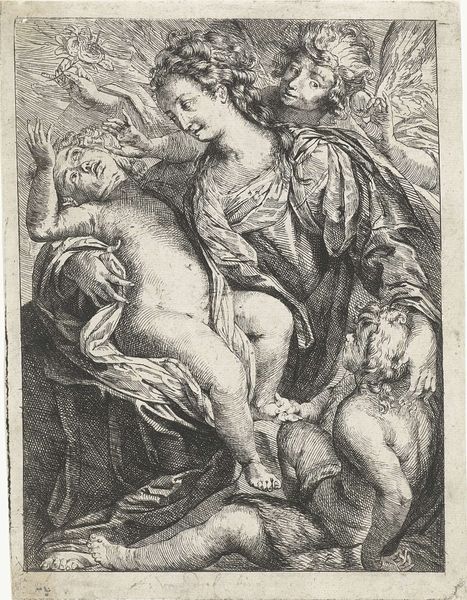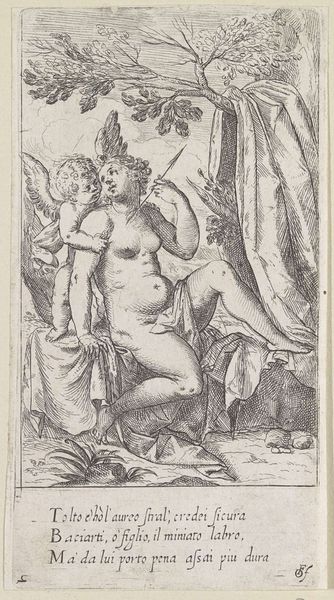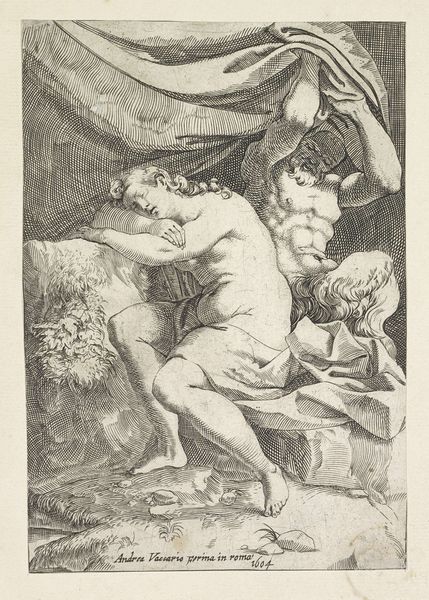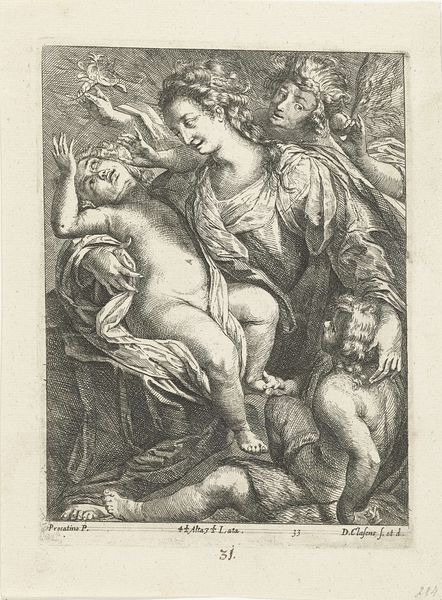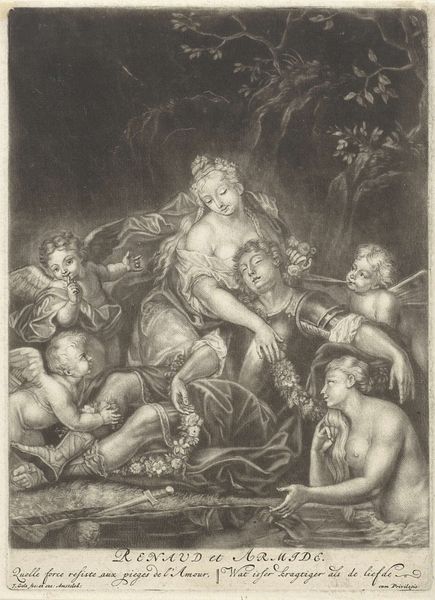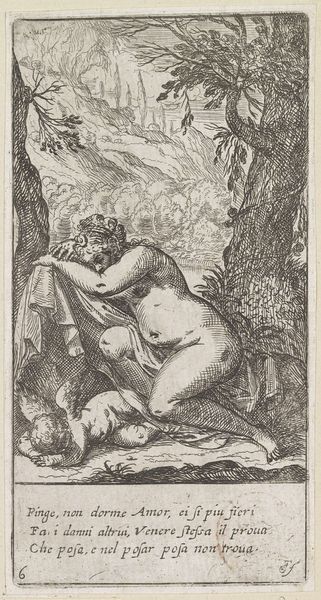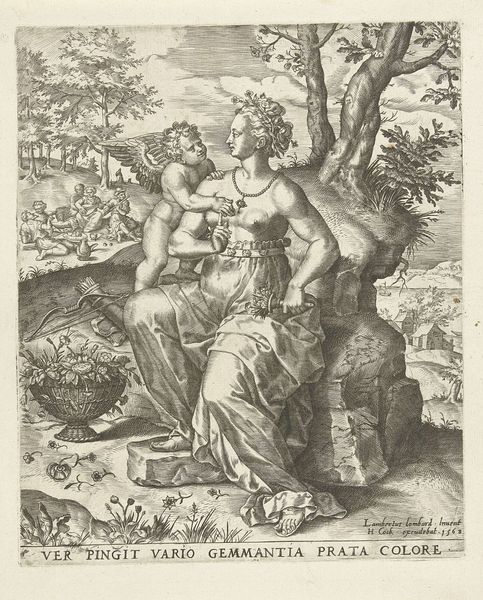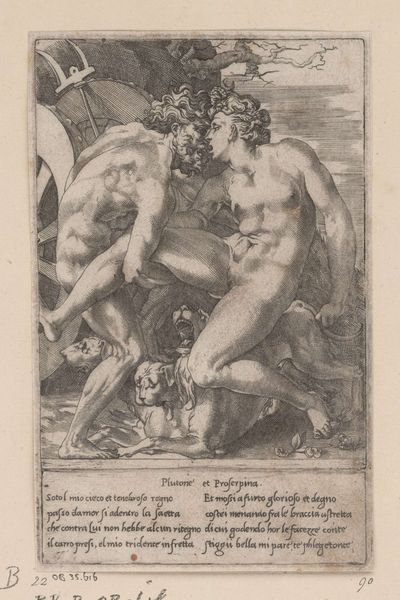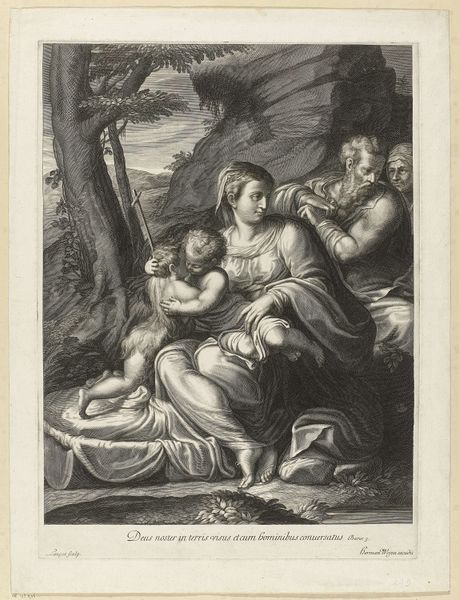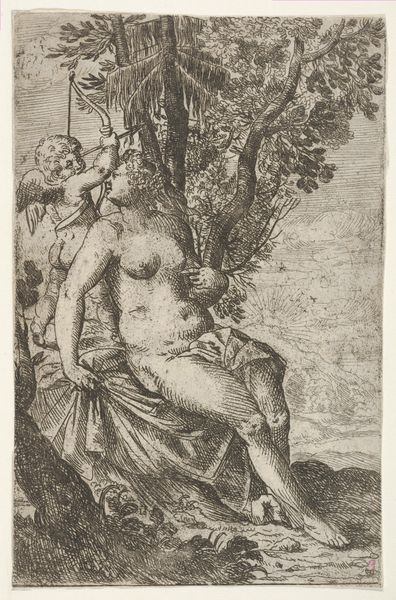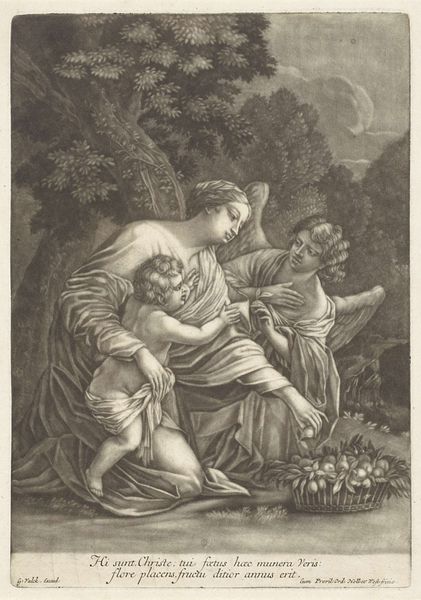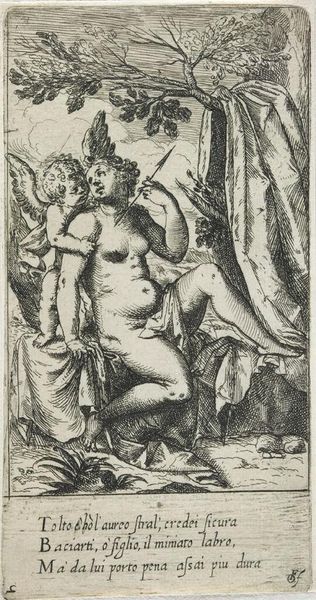
print, engraving
#
allegory
#
baroque
# print
#
figuration
#
history-painting
#
nude
#
engraving
Dimensions: height 154 mm, width 125 mm
Copyright: Rijks Museum: Open Domain
Jan van Somer made this small print, Venus, een duif en drie putti, using the intaglio technique of etching. This process involves coating a metal plate with a waxy, acid-resistant substance called a 'ground', then scratching an image into it with a pointed needle. The plate is then submerged into acid, which bites away at the exposed lines. The result is a matrix that holds ink, ready to be printed. See how the artist varies the depth and density of the etched lines to create subtle gradations of tone? Van Somer must have repeated the etching process multiple times, controlling the amount of time the plate was exposed to the mordant, in order to achieve the desired result. This was an indirect process, requiring patience and skill. Prints like this, made with multiple stages of labor, fueled a growing market for reproducible images, and with it, the rise of a sophisticated artistic economy. It challenges conventional ideas of art as a singular, auratic object.
Comments
No comments
Be the first to comment and join the conversation on the ultimate creative platform.
